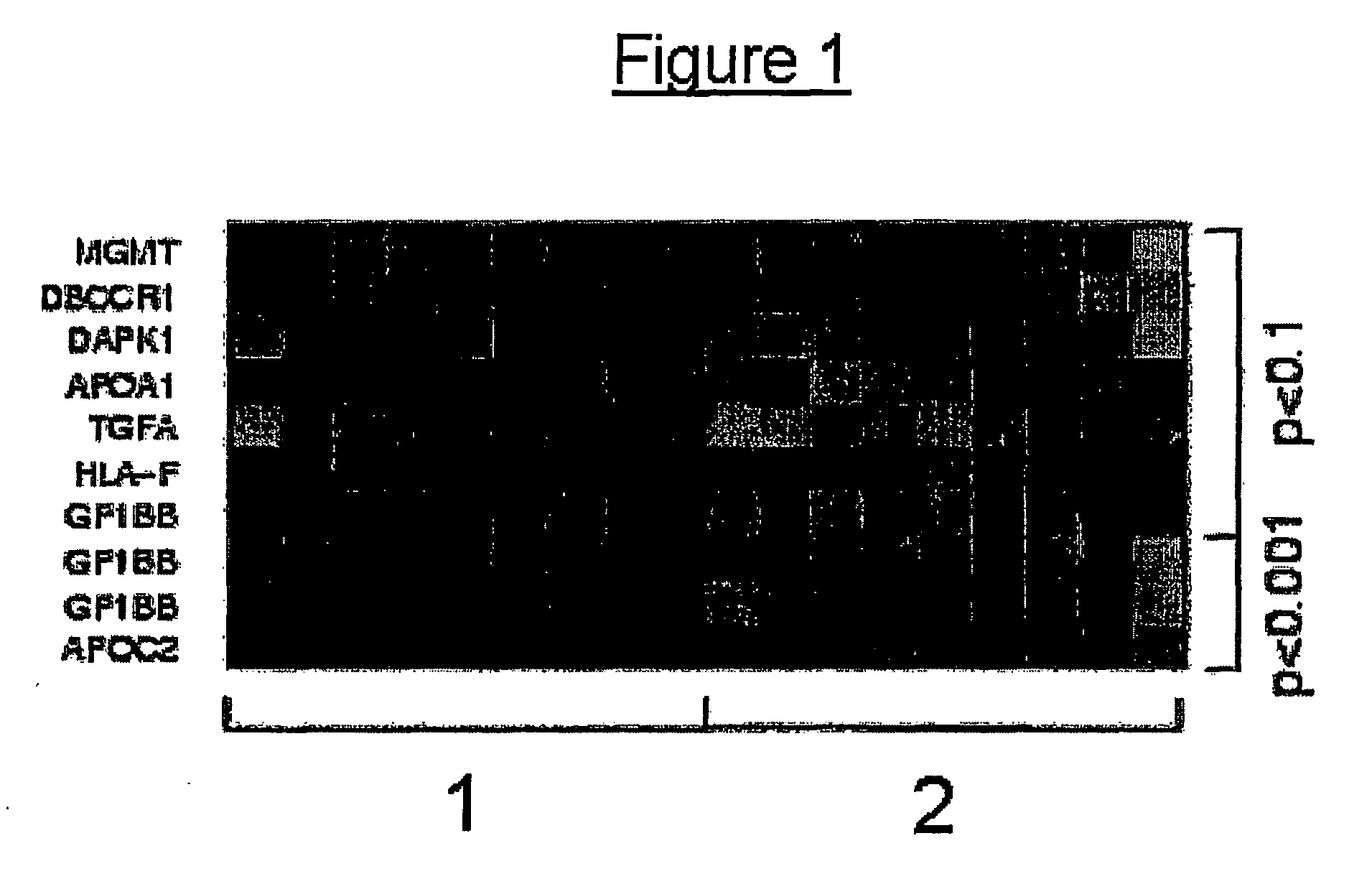Methods and nucleic acids for the differentiation of prostate and renal carcinomas
a technology of prostate and renal carcinoma and nucleic acids, which is applied in the direction of biochemistry apparatus and processes, microbiological testing/measurement, etc., can solve the problems of affecting the clinical application of mrna assays, unable to perform histological examination without major difficulties, and similar problems encountered
- Summary
- Abstract
- Description
- Claims
- Application Information
AI Technical Summary
Benefits of technology
Problems solved by technology
Method used
Image
Examples
example 2
Differentiation of Cancers
[0062] In order to relate the methylation pattern of a sample to one of the tissue specific cancers, it is initially required to analyze the DNA methylation patterns of samples of carcinomas originating from the two different tissue types. These analyses are carried out, for example, analogously to Example 1. The results obtained in this manner are stored in a database and the CpG dinucleotides which are methylated differently between the two groups are identified. This can be carried out by determining individual CpG methylation rates as can be done, for example, by sequencing, which is a relatively imprecise method of quantifying methylation at a specific CpG, or else, in a very precise manner, by a methylation-sensitive "primer extension reaction". In a particularly preferred variant the methylation status of hundreds or thousands of CpGs may be analysed on an oligomer array. It is also possible for the patterns to be compared, for example, by clustering...
PUM
| Property | Measurement | Unit |
|---|---|---|
| Luminous flux | aaaaa | aaaaa |
| Luminous flux | aaaaa | aaaaa |
| Luminous flux | aaaaa | aaaaa |
Abstract
Description
Claims
Application Information
 Login to View More
Login to View More - R&D
- Intellectual Property
- Life Sciences
- Materials
- Tech Scout
- Unparalleled Data Quality
- Higher Quality Content
- 60% Fewer Hallucinations
Browse by: Latest US Patents, China's latest patents, Technical Efficacy Thesaurus, Application Domain, Technology Topic, Popular Technical Reports.
© 2025 PatSnap. All rights reserved.Legal|Privacy policy|Modern Slavery Act Transparency Statement|Sitemap|About US| Contact US: help@patsnap.com

